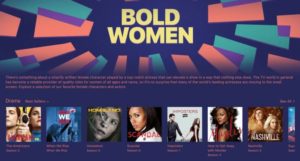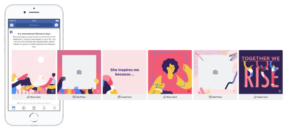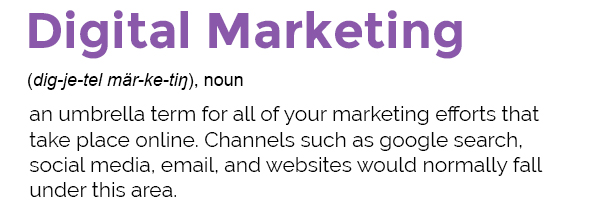
What does Justin Beiber, Ariana Grande, Selena Gomez, Taylor Swift, and Miley Cyrus all have in common besides being current pop music stars? The answer: They all have fan-brands who were nominated in iHeart Radios March 11th/2018 Music Awards for being the loudest, most supportive, and most enthusiastic fans in existence. Wouldn’t you and your company want fans like these? No matter if you are a music band, a record company, or a product brand— from motorcycles to movies to novels to sports teams—you too can create a fan-brand in these seven steps. Read on!
iHeart Radio held its 2018 Music Awards ceremony this past March 11, 2018 to honor the best songs and artists of 2017 . In addition to recognizing a variety of different artists, iHeart Radio is keeping with the tradition of honoring the most passionate fan-brands in the world today. Some of the top nominees include Justin Beiber fans (called Beliebers), Taylor Swift fans (called Swifties) and Ariana Grande fans (called Arianators). But what are fan-brands, why they are important, and how can you too create and exploit your very own fan-brand as part of your integrated marketing communication strategy? Read on!
What Are Fan-brands?
According to an article by E-commerce Consulting , a fan-brand is a group of fans who have been affectionately given an identity by the brands they follow. This is not at all a new concept. The Grateful Dead, a jam rock band that formed in 1965, had a fanbase known as “Dead Heads” and Barry Manilow, who released his first record in 1973, called his fanbase “Fanilows.” Today, “Maggots” represent the metal band Slipknot and “Little Monsters” represent pop star Lady Gaga. Even outside of the music business one can find fan-brands. For instance, Star Trek, the science fiction media franchise, has “Trekkies,” Harry Potter, a series of novels, has “Potterheads,”and the Raiders, an NFL sports team, has the “Raider Nation.”
Why Are Fan-brands Important?
John Michael Morgan in his book Brand Against the Machine says that fan-brands are a way to build loyalty and create evangelists who are going to spread the word of mouth about your brand. People have a natural desire to be part of something bigger than themselves, and to feel as though they are part of an elite and exclusive club. Fan-brands allow customers entrance into such a club and an opportunity to socialize with other like-minded club or tribe members as well. When you refer to a fan-brand by name, each member feels as though you are not only communicating to “us” (the tribe as a whole), but to each individual. This builds brand equity. The stronger the bond a customer has with your company, the greater the possibility that fan will be a repeat and ongoing customer for a very long time.
Don’t Confuse Fan-brands with Paid Sponsors
Be clear that fan-brands, though associated with a brand or even named by the brand, are not paid by a brand as sponsors to be fans or to act in a certain way, and thus fan-brands take on somewhat of a separate entity from the brand. So while there may appear to be potential risks involved with creating a fan-brand, such as when they act in a way that does not fit the values of your brand, people will usually understand that the fan-brand is a separate entity. Take for instance, the fans of the Philadelphia Eagles football team. After the Eagles won the 2018 Super Bowl championship, these fans (called “Birds”) went insane and wrecked the city. The Eagles were never blamed for this destruction as it is understood that the fans are a separate entity who have always acted on their free will.
How To Create, Cultivate, and Exploit Your Own Fan-brand
So how do you go about creating your own fan-brand? Well, besides having a quality product that fills an important need in the marketplace and is positioned uniquely from the competition, there are essentially five simple tips to creating and exploiting your very own fan-brand according to both a blog posting by Jackie Huba and Commerce Consulting. Here’s seven tips offered:
1) Research your fans: Understand what makes your fans tick. What are their demographics (age, gender, ethnicity), psychographics (activities, interests, and opinions), and behavioral characteristics (the attributes they seek in your brand as well as the rate in which they consume your brand)? Note that the greater you understand your fans and communicate with them in a language they understand, and the better you listen to them and show them that you care, the better the chance they will trust you and passionately follow your company for years to come.
2) Name your fans: Find a name that both represents your brand and your fans and that shows affection for them. Take the rock band Kiss for example. Given its heavy metal sound and its rowdy fans who were rumored to have threatened to “attack” any radio station who did not play Kiss’s records, the rock band Kiss named its fans “Kiss Army.” Pop star Lady Gaga is another example. Given her far-out stage antics and her allegiance to those who do not follow the stereo-typical path in life, Lady Gaga called her fans “Little Monsters”
3) Create a language or a symbolic shared meaning. Lady Gaga uses a monster claw hand symbol that specifically is her way (and the fan’s way) of identifying that they are one of the same tribe. Jimmy Buffet fans, called “Parrot Heads,” identify themselves by wearing crazy looking parrot hats. And the jam rock band Phish actually communicates with its “Phans” live in concert by using a musical language they created specifically for the fans. When the band place certain notes and riffs, Phish “Phans” respond in a certain way. By creating shared meaning through symbols, a company essentially gives its fans a secret insider code or language that says, “This is our club.”
4) Create a website dedicated to the fan-brand. Start an official fan-brand website (e.g.,www.kissonline.com/) as well as social media pages on different platforms that allow the fans to interact with each other and engage. Provide special perks on these mediums for the fans that other non-members are not entitled to. By making fans feel special, you’ll create a feeling of exclusivity that can lead to building stronger bonds and greater brand loyalty.
5) Create or sponsor offline fan-brand events: Create exclusive offline events specifically to give fans a way to mingle with you, interact with the brand and to interact with each other. Harley-Davidson Motor Company is the title sponsor of Daytona’s Bike Week held in Daytona, Florida during March of 2018. Star Trek conventions around the country have been drawing devoted Trekkies for years. And Slipknot is known for holding gatherings where dedicated fans share ideas and information with each other. Typically, thousands of people show up to these events and flood the Internet with pictures and stories of how they engage the brand. This creates tremendous word of mouth and is a great way to build community around your brand.
6) Utilize the fan brand hashtag in all of your social media posts. When communicating with your fans on social media sites, utilize a uniform hashtag where all of the tribe members can easily search, find, and share content from one and another. By getting fans to interact with other fans online, the family bond has the potential of growing on a global scale. Again, the stronger the bond, the greater the loyalty you’ll get over the long-term.
7. Be Consistent. Finally, when branding your fans, as with all branding, be sure to be consistent and go the long haul. It is important to refer to your fans in all of your communications and engage them in the same way over a significant period of time.
So that’s pretty much it. Whether you are a band, solo artist, manager, record label and really any type of branded product from motorcycles to cars to novels, you too can work at creating a fan-brand by following the above seven steps. Even if you are just starting out and you don’t have a lot of fans, the attention and exclusivity your customers feel could lead to more and more fans joining the pack. Sure, fan branding will take a lot of time and effort, but as Bieber, Kiss, Swift, Harley Davidson, the Raiders, and many other artists and companies will surely express, the return on investment is worth it!

Bobby Borg is the author of Five Books about the Music Industry: He writes for a variety of blogs including Music Connection Magazine, Sonicbids, and Disc Makers. His Website is www.bobbyborg.com.




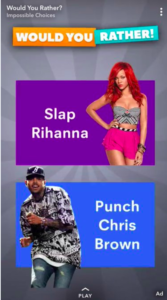





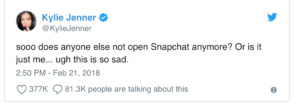
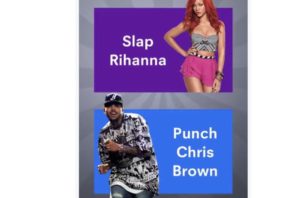
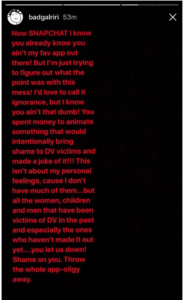
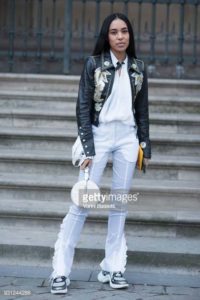
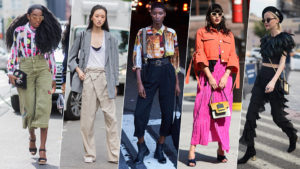 consumers to their digital platform as a way to reap from mobile-centric activations (Bohannon, n.d.).
consumers to their digital platform as a way to reap from mobile-centric activations (Bohannon, n.d.). Unlike before where fashion weeks were reserved for the elite, brands have discovered the power of digital marketing through media influencers. In shows, the long-established media outlets are let into the magic, but nowadays, bloggers, vloggers, and other media influences have been given a front seat for the action as well. Social media has brought down the walls of fashion week, and it is only imperative for brands to come up with sustainable marketing tools to ensure that they get value for money.
Unlike before where fashion weeks were reserved for the elite, brands have discovered the power of digital marketing through media influencers. In shows, the long-established media outlets are let into the magic, but nowadays, bloggers, vloggers, and other media influences have been given a front seat for the action as well. Social media has brought down the walls of fashion week, and it is only imperative for brands to come up with sustainable marketing tools to ensure that they get value for money. concepts will revolutionize how we consume goods and services. Fashion is one of the industries that have gone through a 360-degree change, and as we go through marketing communication, it is not beyond us to understand that it is here to stay. What do digital marketing tools you think are going to transform our economy? Will they improve or disrupt the industry?
concepts will revolutionize how we consume goods and services. Fashion is one of the industries that have gone through a 360-degree change, and as we go through marketing communication, it is not beyond us to understand that it is here to stay. What do digital marketing tools you think are going to transform our economy? Will they improve or disrupt the industry?


